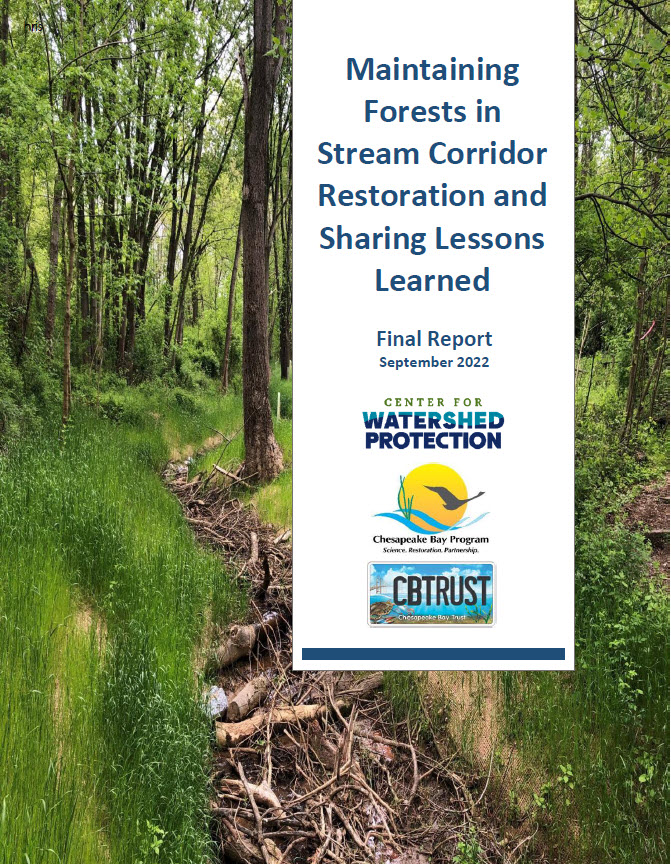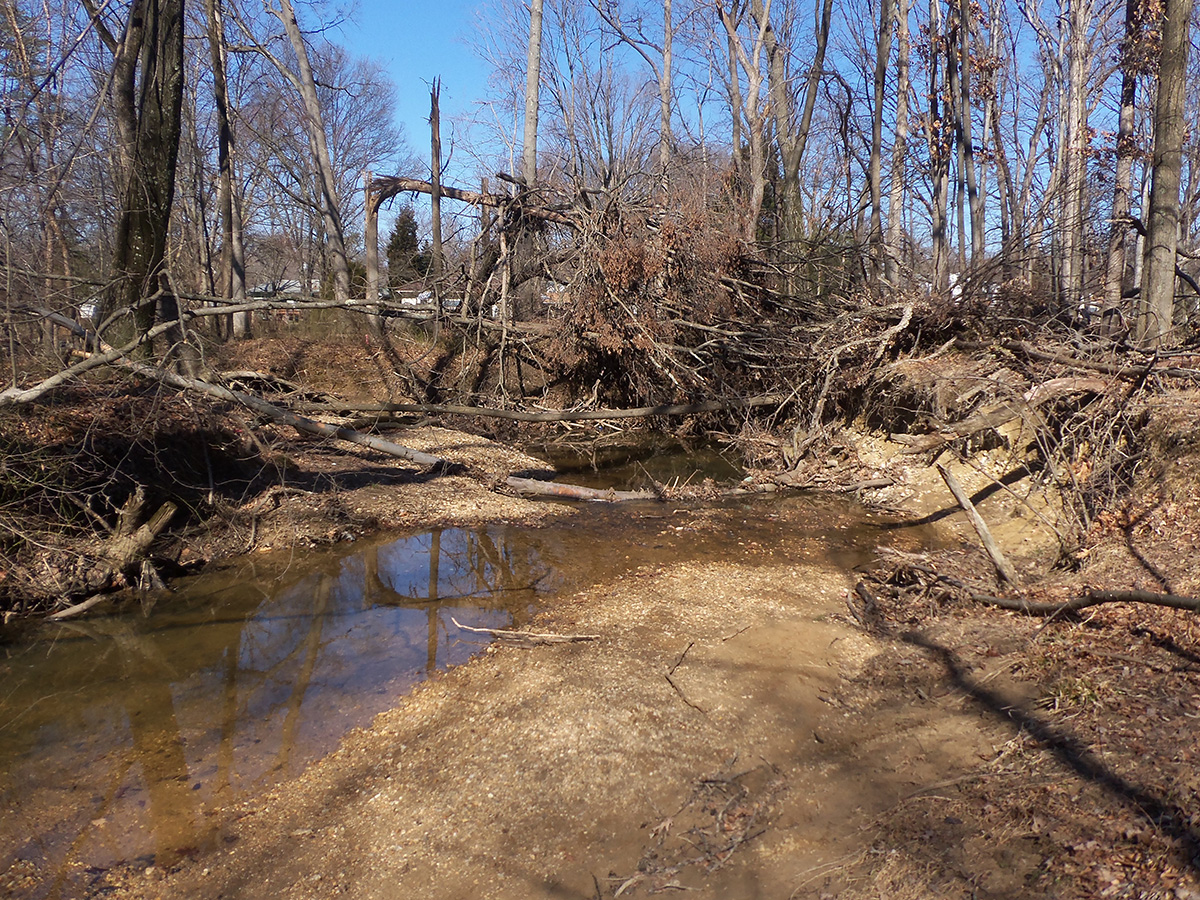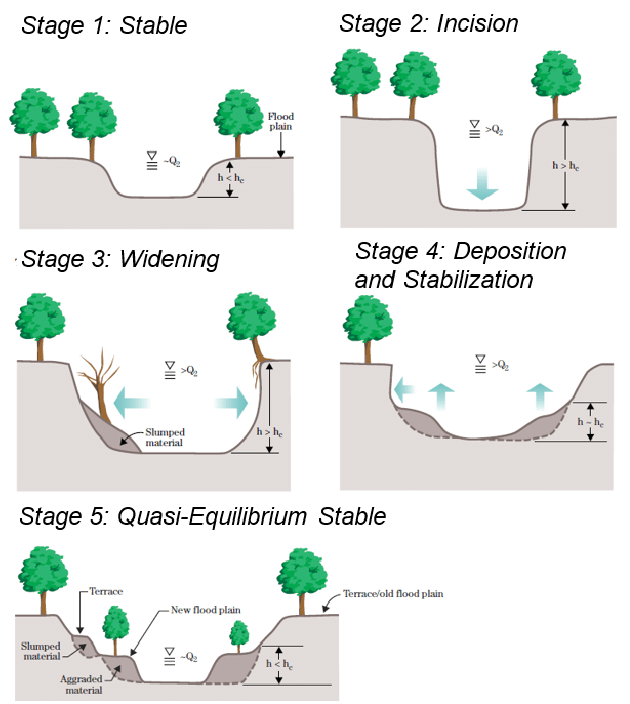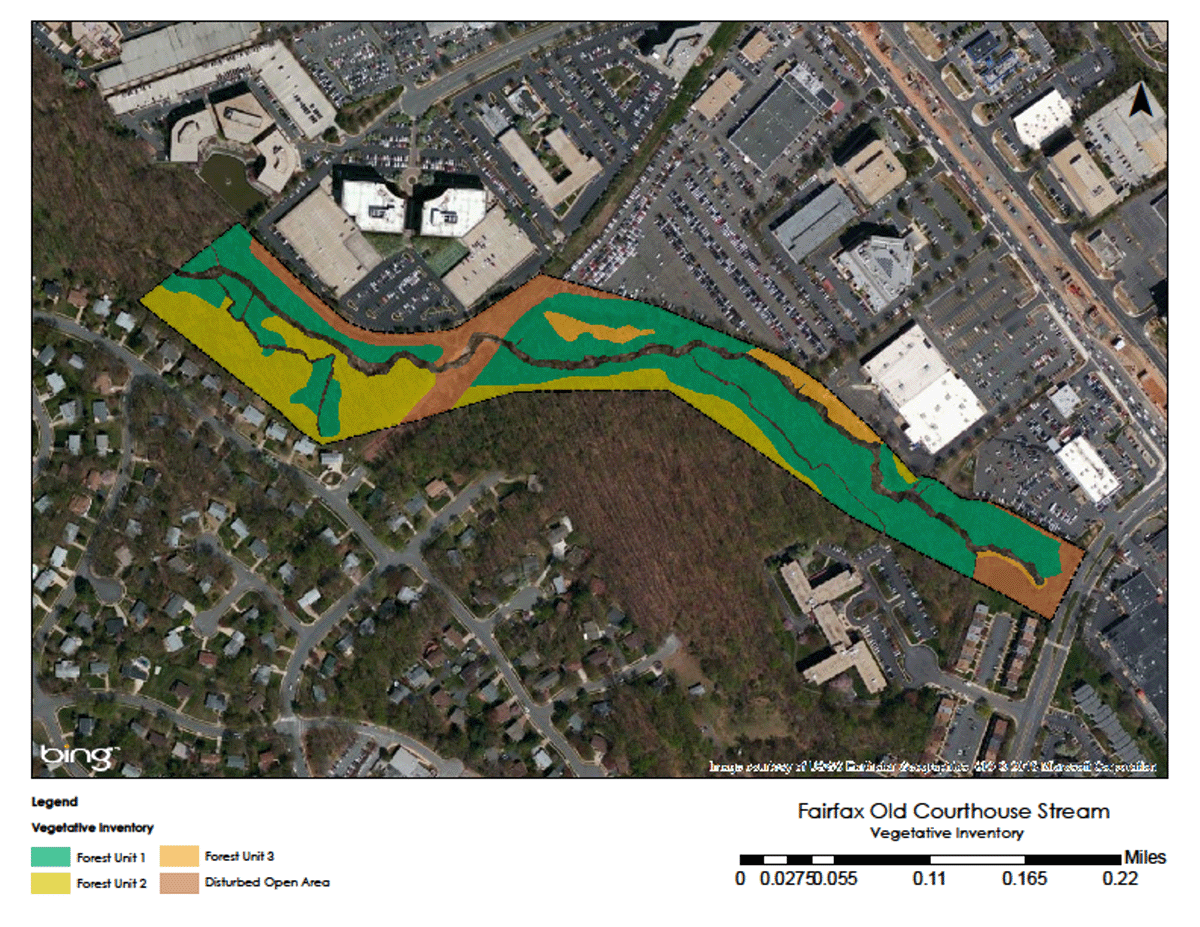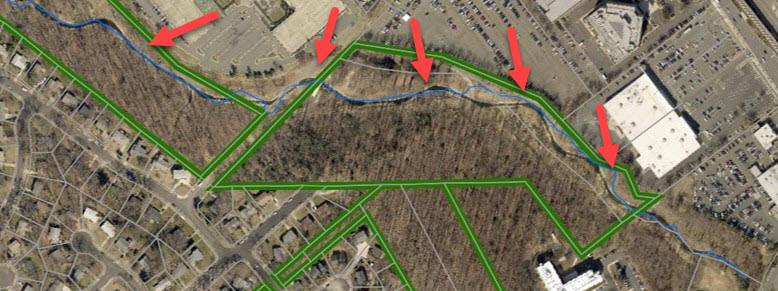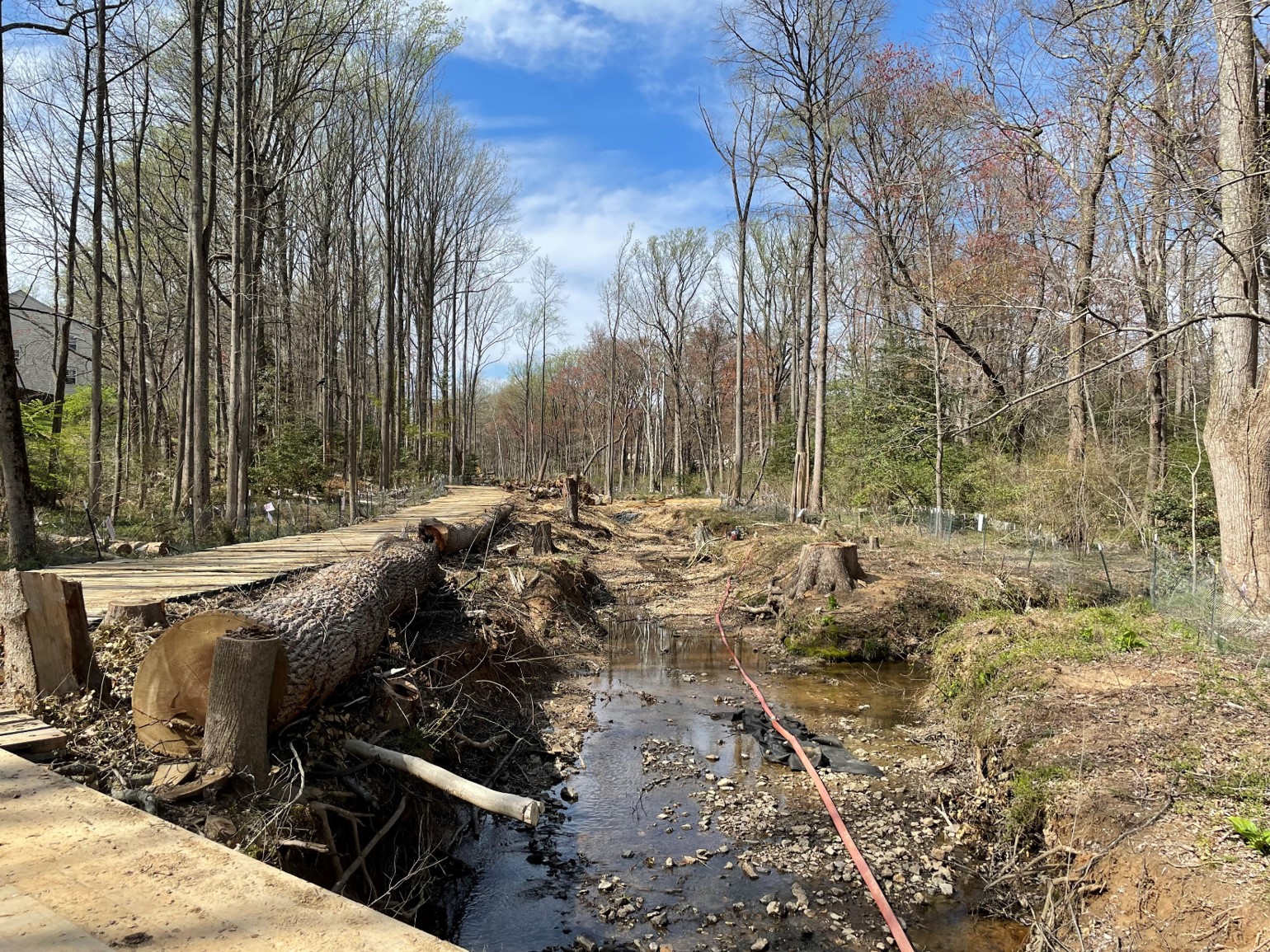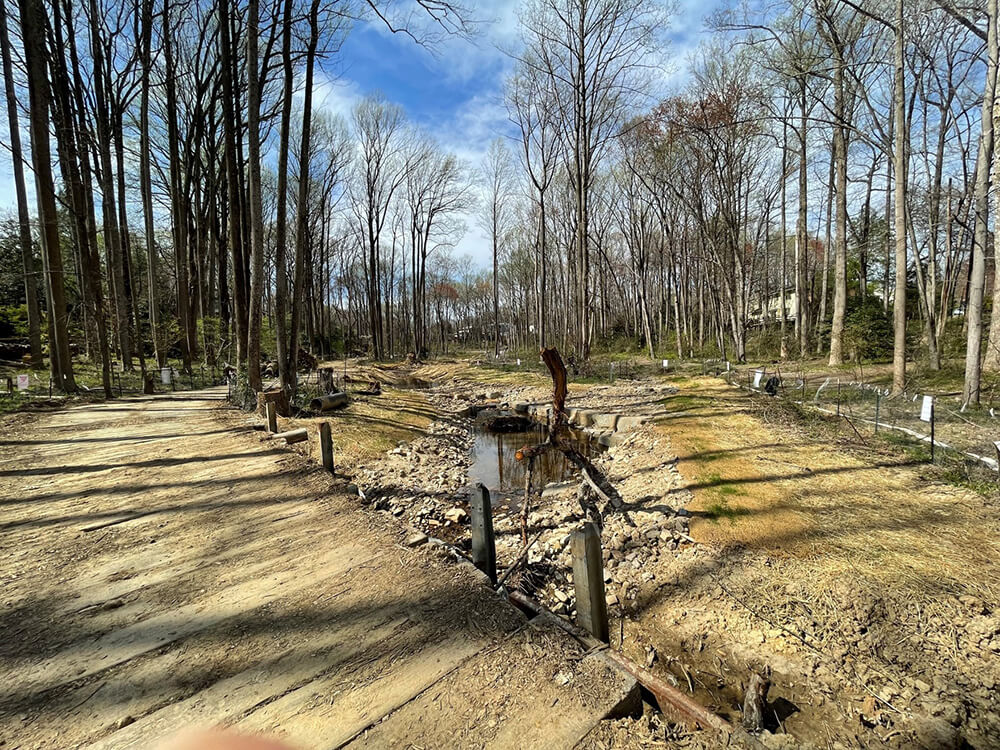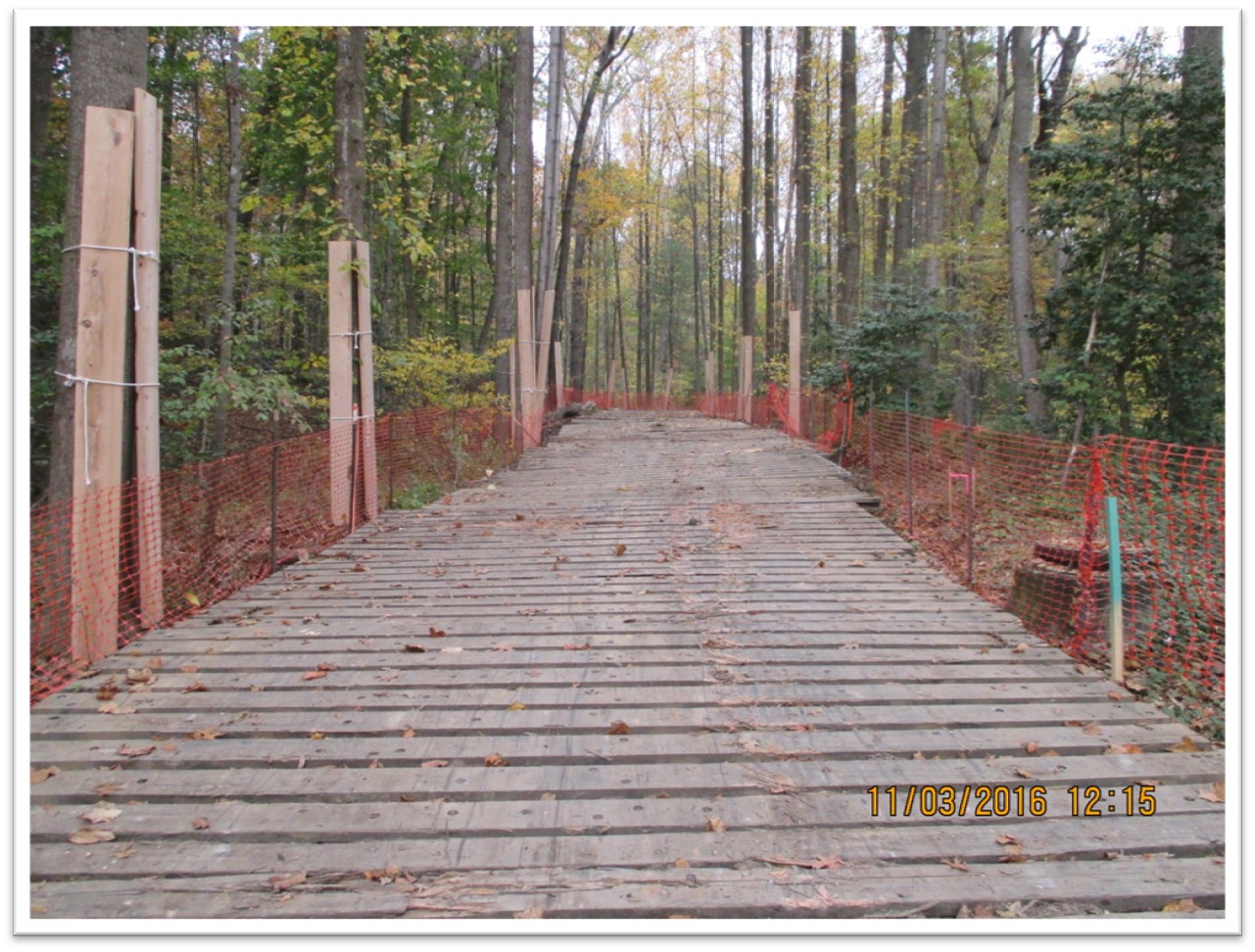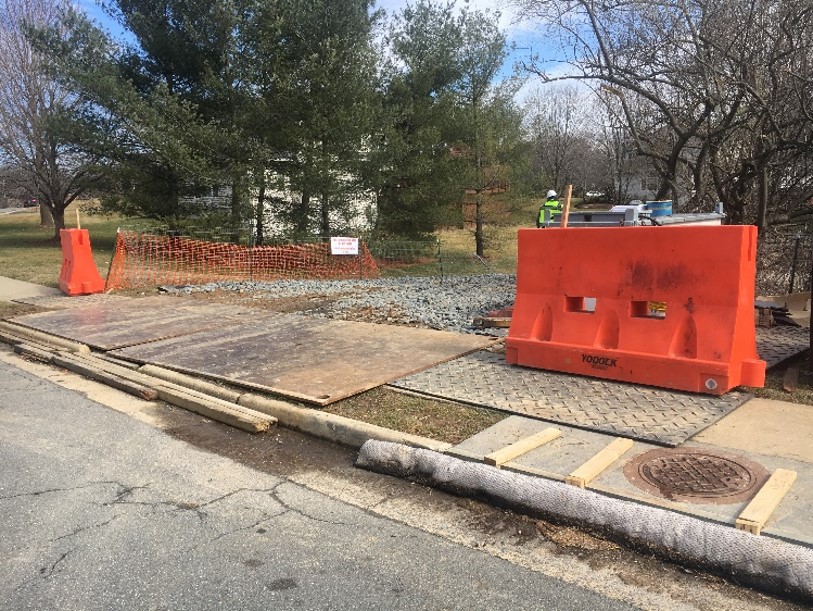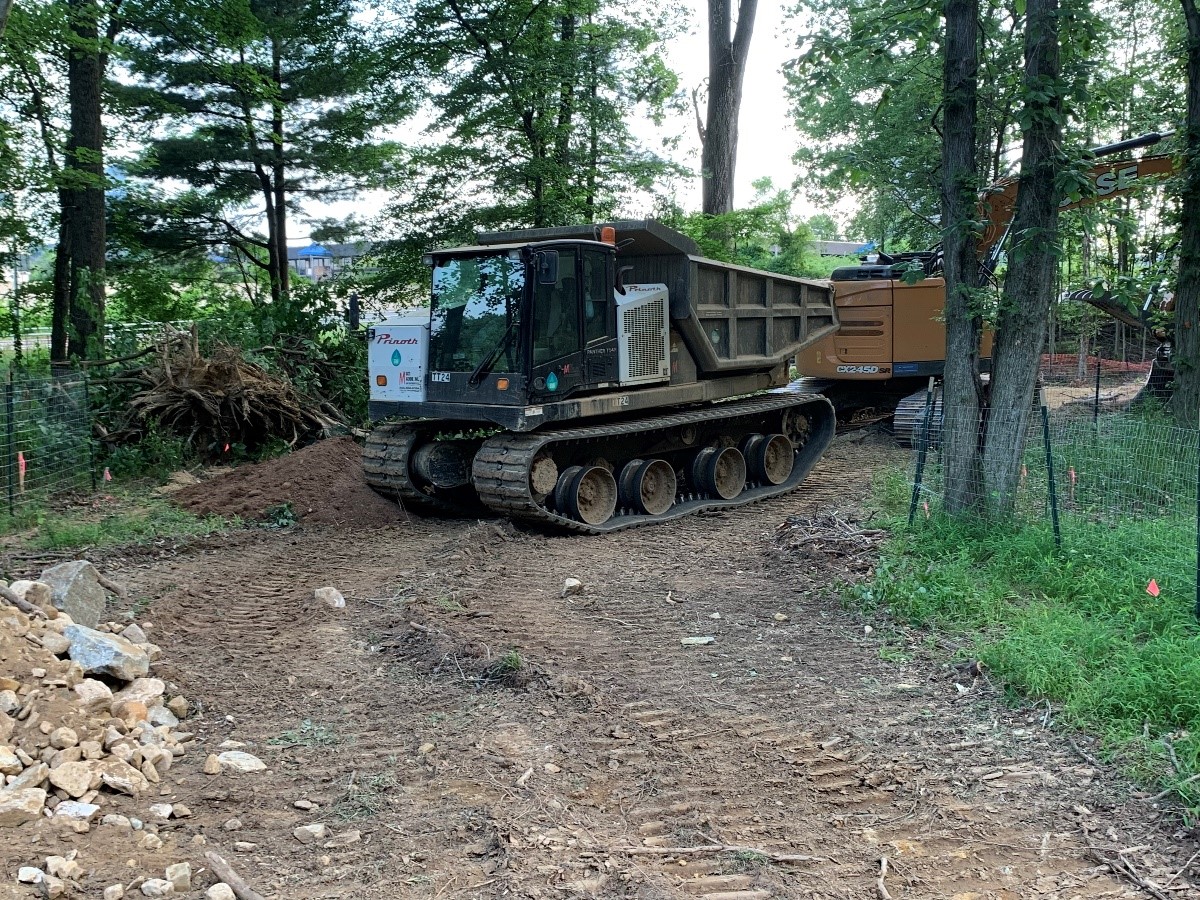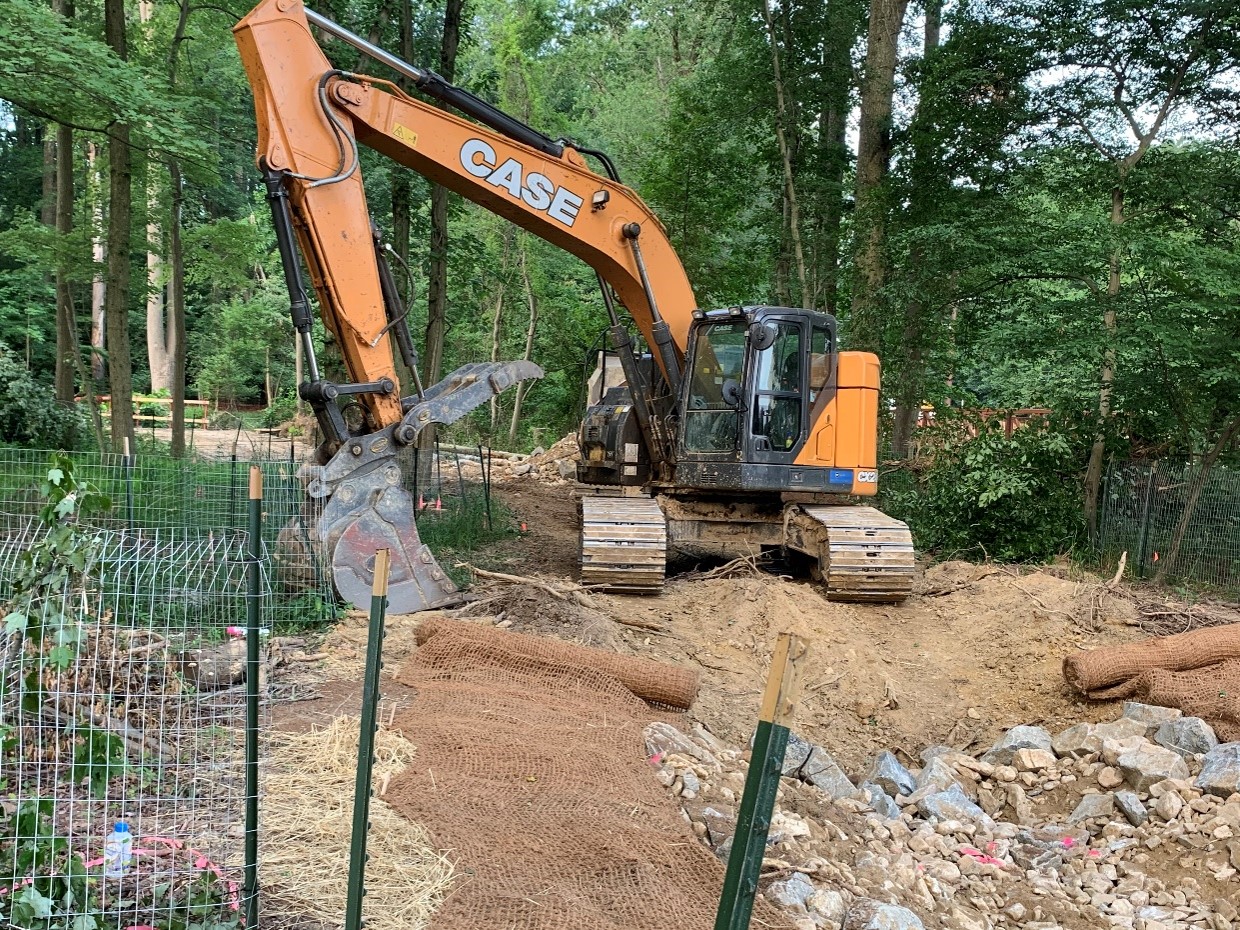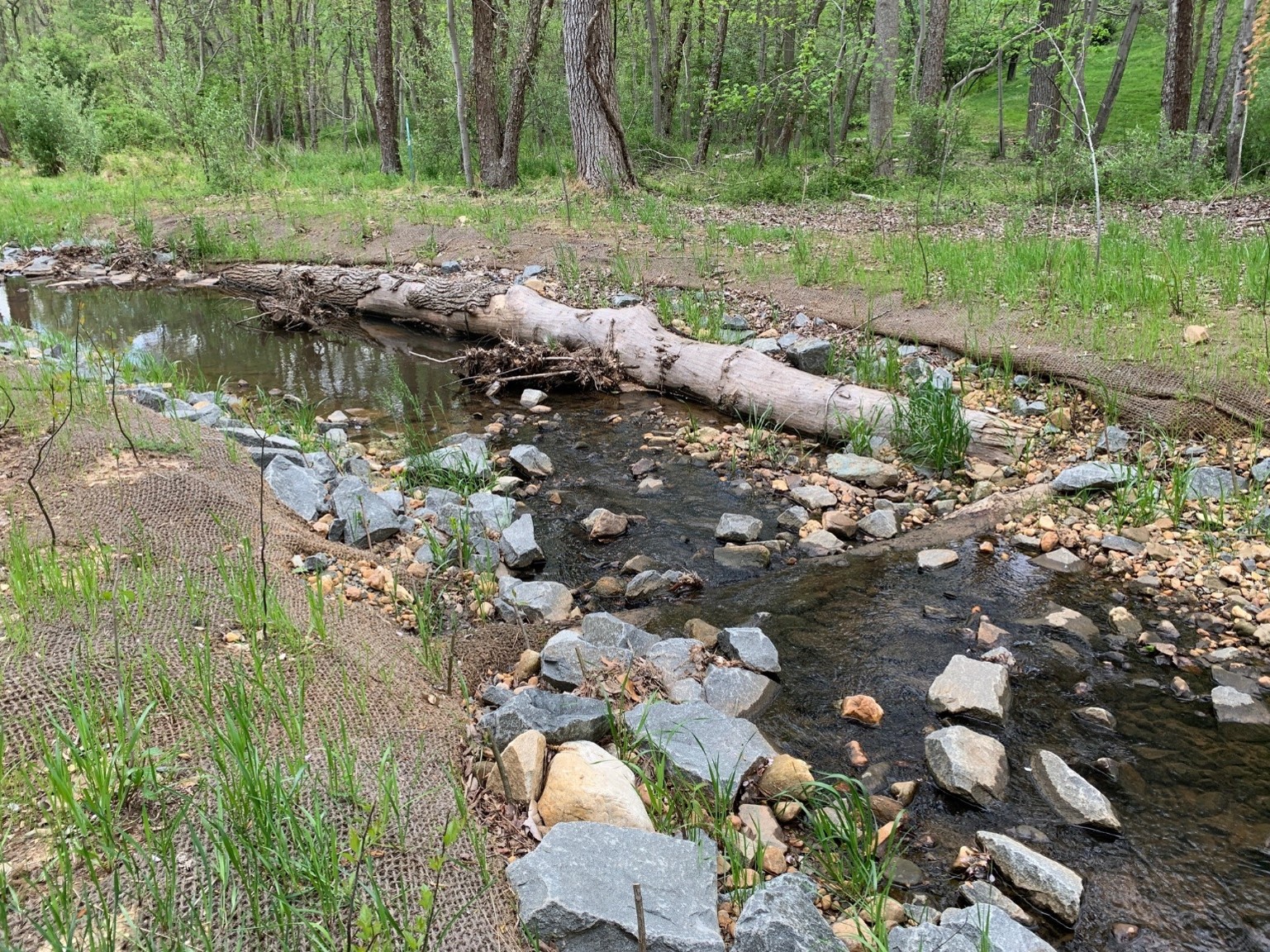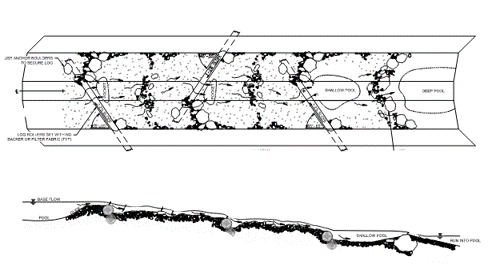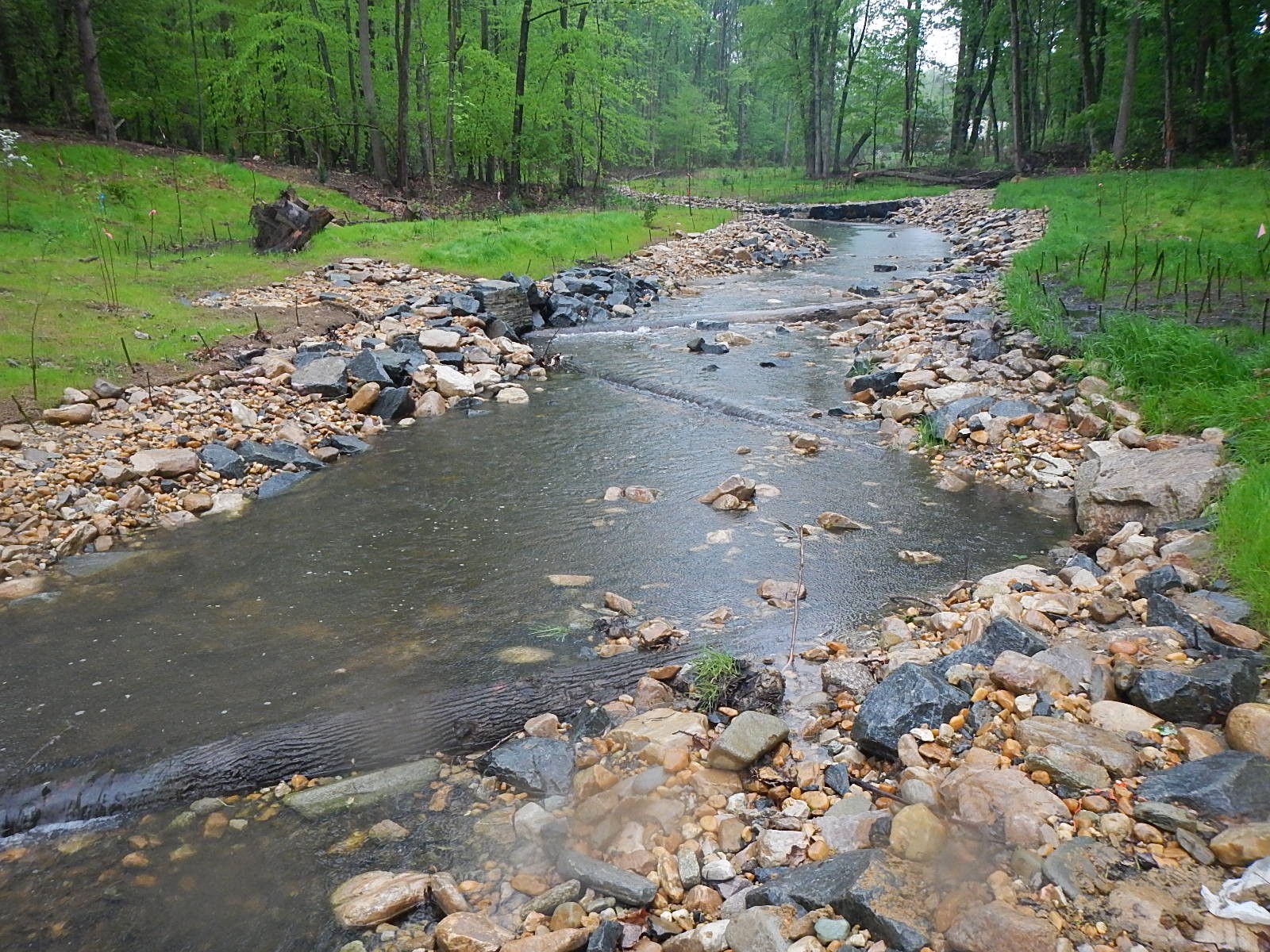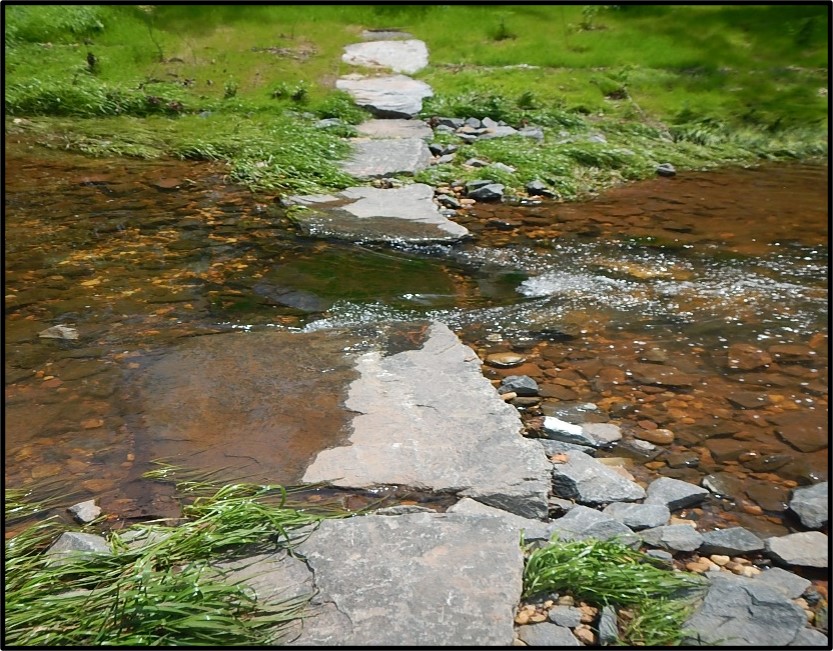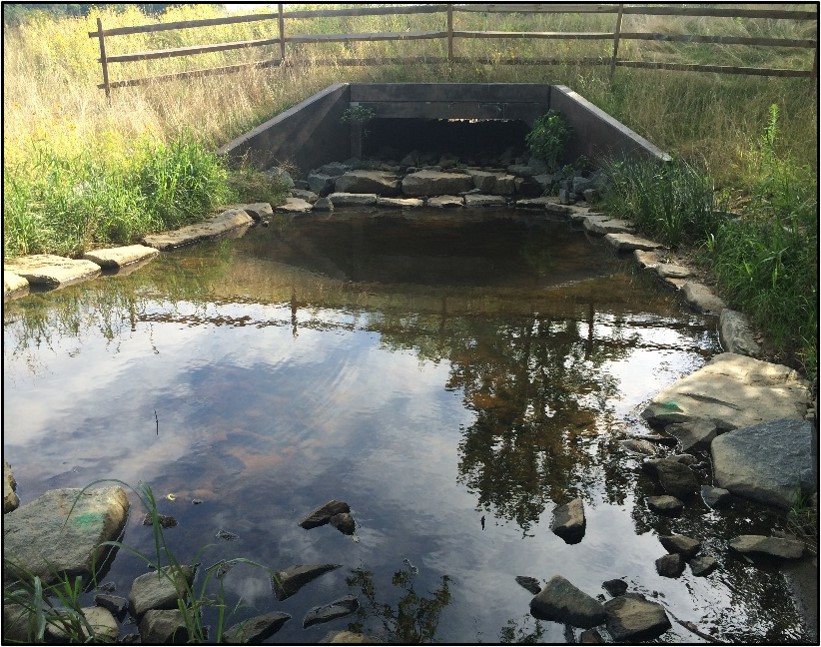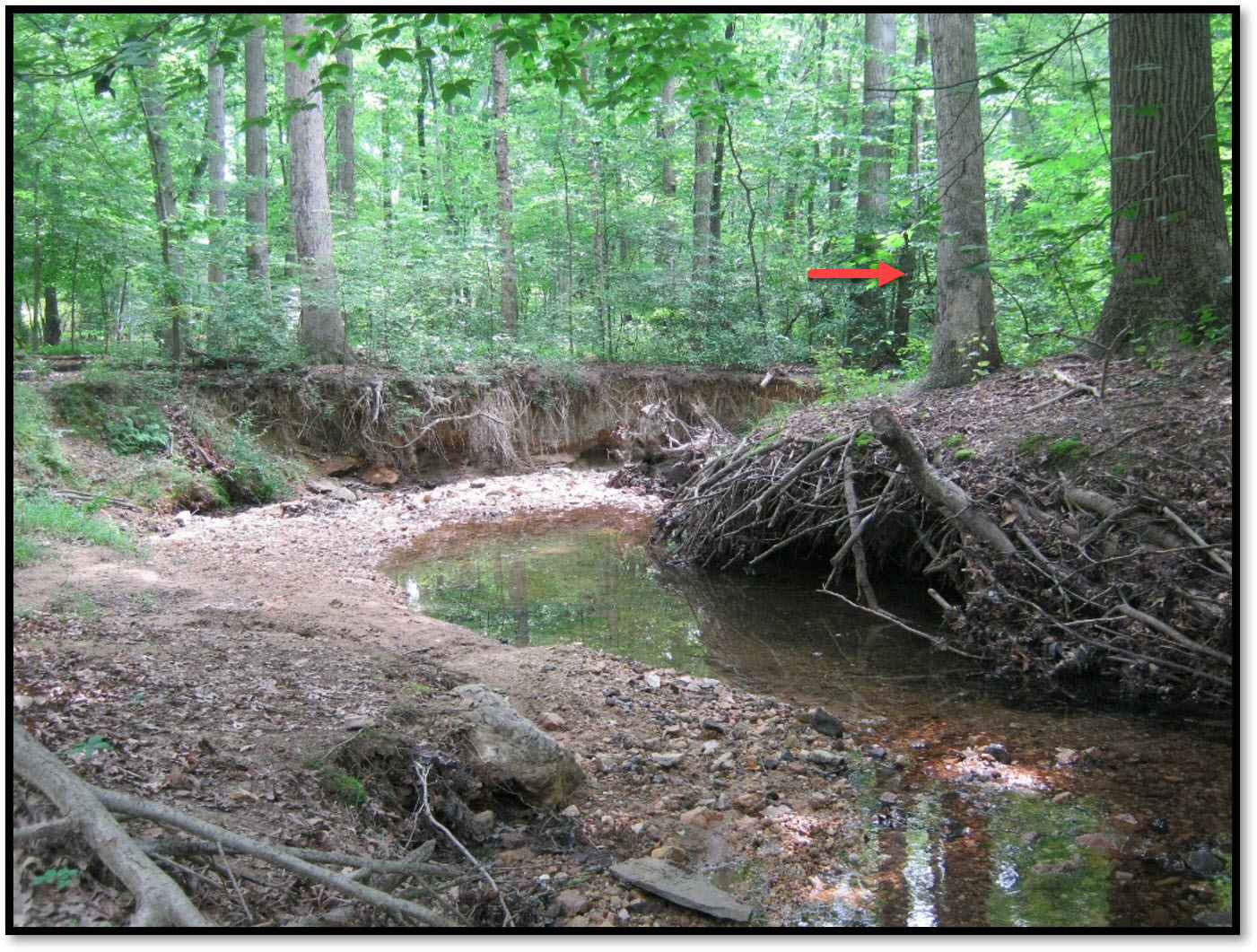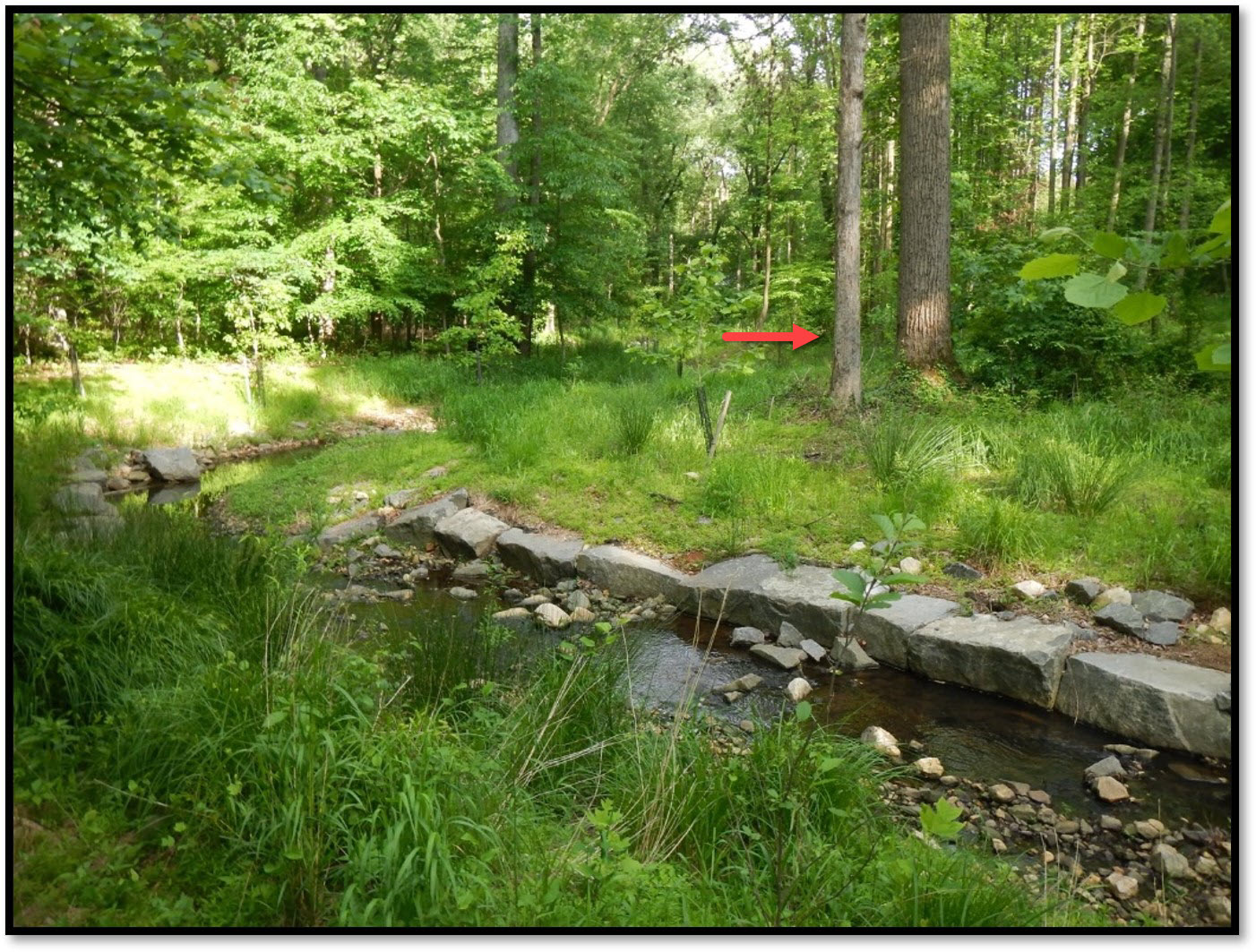To find out if stream restoration is working, Fairfax County checks on the streams regularly and works with other agencies, organizations, and researchers. If any problems are found in a restored stream, Fairfax County will take care of it and make repairs.
Monitoring: Fairfax County workers check on the streams in three (3) ways after fixing them to see if the project is successful:
- For three years after the work is done, they do warranty checks to see how well the native plants are growing and to take care of any problems, like invasive species.
- Every five years, they inspect each site to make sure everything is still working well. This is required and follows the rules set by the Chesapeake Bay Expert Panel and the Virginia Department of Environmental Quality.
- Some projects are part of a study group that looks at plants, fallen trees, and soil. Early results show that the areas are healthier after the restoration than they were before.
Maintenance: After Fairfax County fixes a stream, they keep checking on it through the county’s Maintenance and Inspections program. They do regular inspections to see if the project is working well and to find any issues. If they find a problem, county workers and contractors will fix it. If you notice any problems with a restored stream, you can Report a Problem to county staff.
Working Together with Independent Agencies and Organizations
In 2022 the Center for Watershed Protection completed a detailed study with many different groups to look at how stream restoration affects forests in the Maryland, Washington D.C., and Virginia areas. They checked out stream projects and practices and gave advice on how to reduce the impact on forests from stream restoration.
Fairfax County took part in interviews, case studies, and online seminars. All four case studies in Virginia were Fairfax County projects. An independent expert inspected these projects and found that all four were successful.
Working with Independent Researchers
Scientists in the mid-Atlantic region have found that while fixing streams doesn't help improve the number of insects and other small creatures living in the stream beds (called benthic macroinvertebrates), it is good at making stream banks stable, protecting buildings and roads, and improving physical features like pools and riffles. (See Hildebrand, July 2020, Chesapeake Bay Trust)
In 2007 Fairfax County partnered with the US Geological Survey to establish a long-term study of water resources in the County and specifically to observe how conditions may be changing in response to watershed improvement efforts - like stream restorations. Please visit the Fairfax County – USGS Partnership page to learn much more about this intensive monitoring effort and the studies produced from these efforts.
In 2022, a graduate student working with the United States Geological Survey studied floodplains at eighteen of Fairfax County’s restored stream sites. She discovered that these sites were successfully trapping and storing carbon, nitrogen, and phosphorus. She also found that the soil in the floodplains was wetter in the restored areas. (See Napora, 2023, University of Maryland)


